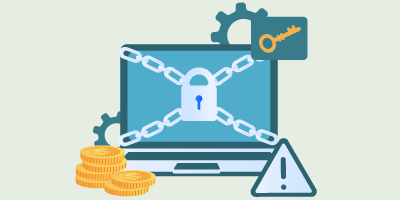Need-to-know privilege is a key information security concept designed to control user access to an organization’s infrastructure. By providing employees with elevated or basic permissions to access systems and data on a need-to-know basis, organizations can ensure critical infrastructure and data is not compromised by human error or a malicious attack.
In this blog post and video, we’ll explore the concept and benefits of need-to-know privilege.
What is need-to-know privilege?
Need to know implies that users should only be granted privileges that are necessary to perform their job functions or specific assignments. If users do not need certain privileges to complete their tasks, these privileges should not be assigned to them.
There is considerable overlap between need-to-know and the principle of least privilege, with both geared toward limiting access to critical information.
But what is privilege in cybersecurity?
In cybersecurity, privilege is the authority given to specific accounts and processes within a company’s computing networks. By assigning privileges to certain individuals within an organization, they can be given permission to override or bypass security restraints. Employees can also be granted privileges to shut down systems, load device drivers, configure networks, and set up IT infrastructure.Employees can be assigned accounts with elevated administrative or basic standard privileges to protect an organization’s systems and information.
Administrative Privileges : These privileges allow administrator accounts to make major changes to a system, including to the computer’s operating system, large software programs like databases or management systems, and hardware.
Standard Privileges : Compared to administrative privileges, standard privileges are more restrictive. These user accounts are granted just enough privilege to perform everyday functions, such as run a software, browse the web, or use general functions. These accounts generally do not have permissions to modify a system, download or install a software, or sometimes even delete files.
For operational ease, certain users can be given elevated or administrative privileges to access specific resources or accounts within the company’s computing system, such as databases or storage. Users can also be granted temporary administrative privileges or permission to bypass standard privilege to allow employees to assist administrators and IT staff when necessary.
Benefits of need-to-know privilege for organizations
Minimize human error: By assigning privileges on a need-to-know basis so employees have administrative or standard rights based on their job functions, you can minimize the impact of human error and prevent unintentional system changes or disruptions that could hurt the stability of your organization’s overall infrastructure.
Reduce impact of cyber threat: Need-to-know privilege can help reduce the impact of a cyberattack. If administrative and standard privileges are properly distributed across your organization, a hacker would have a harder time gaining access to your critical data and systems. On the other hand, if users were improperly granted administrative privileges, hackers would gain elevated system rights through such accounts and could potentially damage your infrastructure.
Data security: By limiting employee access to your data and resources using need-to-know privilege, you can protect your sensitive information against potential leaks and boost overall data security.
Need assistance with Implementing Need-to-Know Privilege?
GraVoc’s Governance, Risk, & Compliance (GRC) services help organizations improve their overall security posture by reducing risk exposure, aligning with information security best practices, and conducting security awareness trainings. Click below to learn more!
Related articles
Change Healthcare Attack: Ransomware Protection Measures for Healthcare Organizations
In light of the Change Healthcare attack, we explore why hackers target healthcare and how healthcare can defend against ransomware.
GraVoc Recognized on CRN MSP 500 List for Second Year in a Row
For the second year in a row, GraVoc has been recognized on the CRN® MSP 500 list in the Pioneer 250 category!
PCI SAQ Types: Which SAQ is Right for Your Business?
In this blog post, we provide an overview of the SAQ types for PCI DSS v4.0 and how to select a PCI SAQ that’s right for your business.




